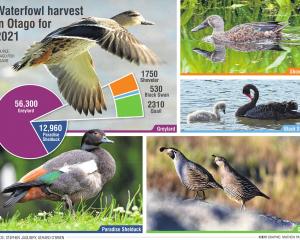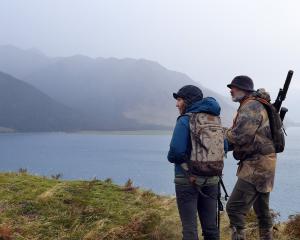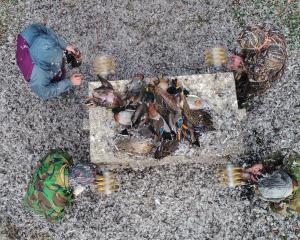The Game and Forest Foundation, which represents fishing and hunting organisations, has called for a boycott of meat company Silver Fern Farms (SFF).
The foundation said SFF was sourcing 1000 chamois shot from helicopters to process through its Hokitika deer-slaughtering plant because of insufficient volumes of seasonal farmed and feral deer, which would result in the depletion of the population and affect the foundation's members.
SFF chief executive Keith Cooper has reacted angrily, labelling the comments as "scurrilous" and incorrect, saying the foundation wanted to restrict commercial harvesting of game animals to its members, when commercial benefits from harvesting wild animals was wider than that.
"SFF has invested more than any other company in the game and venison sectors and we are extremely disappointed to see such an ill-informed and misguided statement issued," he said.
The chairman of the Game and Forest Foundation, Tom Williams, has called on hunters, hunting guides and game managers not to send stock to SFF plants or buy their products, claiming a chamois carcass would be worth $100 to the exporter compared with the $3000 an overseas hunter would pay to shoot it.
"Game and Forest is not opposed to the commercial harvest of game animals for meat, but it must take place within the management of the resource as a whole and take account of all users."
Chamois were becoming hard to find, especially on the east side of the main divide.
He said SFF was showing an "uncaring and uncompromising attitude to other users of the chamois resource", and there were greater benefits to the economy from having hunters pay to shoot chamois "than this wasteful practice of shooting them for meat".
Mr Cooper said SFF would process a lot fewer than 1000 animals; the Department of Conservation (Doc) allowed SFF to hunt the animal; the Hokitika plant was licensed to process the animal; and it had markets for the meat in Europe.
Doc recognises chamois, which are found throughout the South Island high country, as pests and while accepting eradication was not considered feasible, numbers were being controlled in areas of high conservation value.
Doc considered chamois a secondary pest target behind goats and tahr.
SFF and the foundation have met previously, but Mr Cooper said he could see no benefit in doing so in the future.












